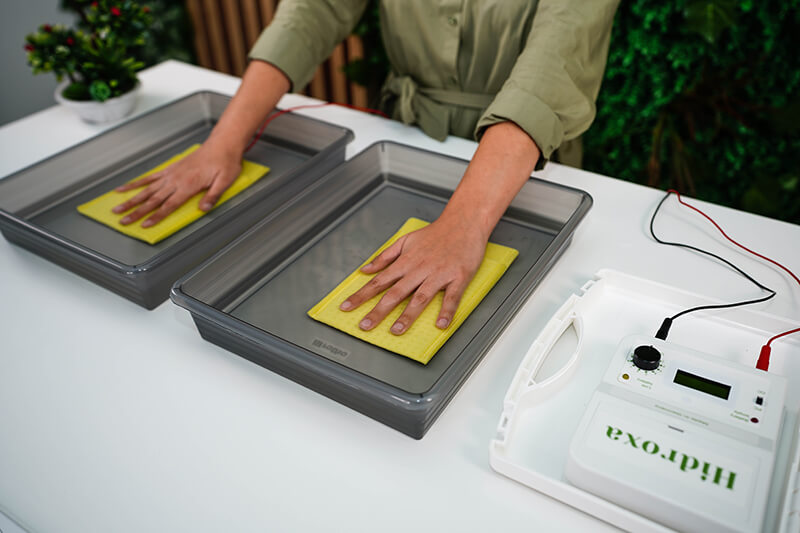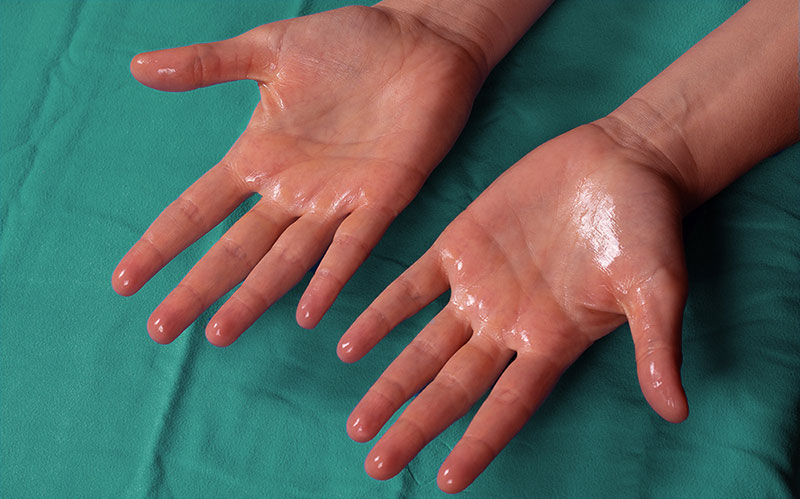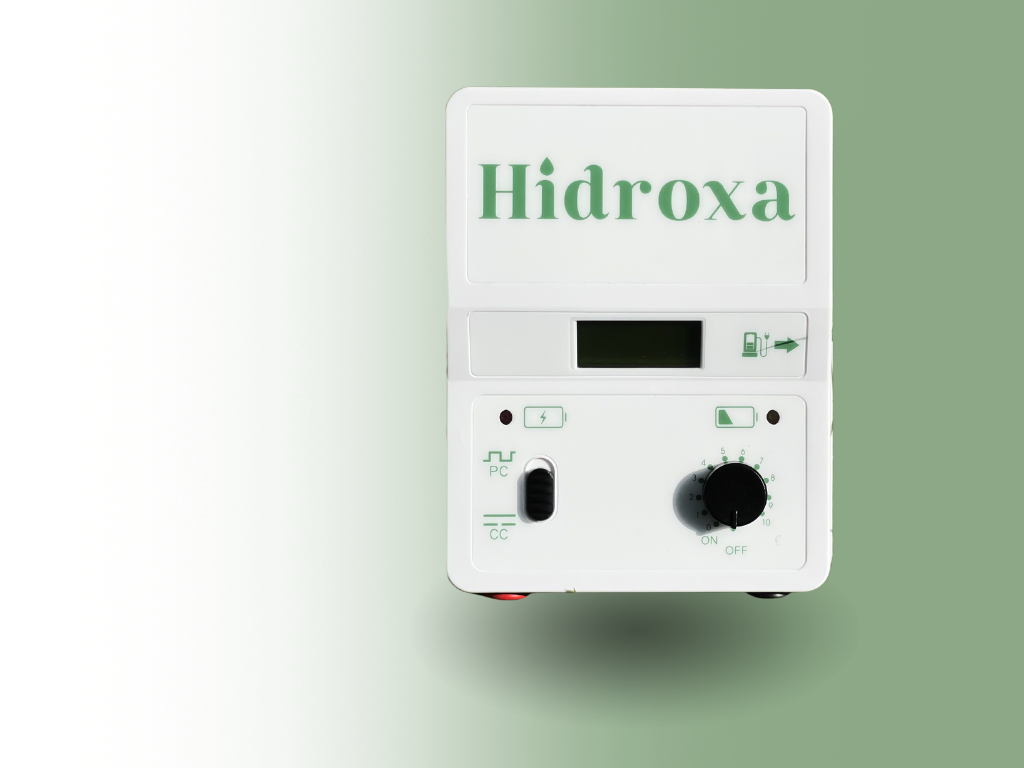Is iontophoresis safe? Understanding the treatment for excessive sweating
Imagine a world where you could wave goodbye to embarrassing sweat stains and the anxiety they bring. This dream could be a reality for many, thanks to a little-known yet revolutionary treatment: iontophoresis. But amidst its growing popularity, one crucial question lingers in the minds of potential users: "Is iontophoresis safe?"
In this detailed guide, we go beyond the basics; we explore the principles behind iontophoresis to fully understand its functionality. Known for its simplicity and non-invasive nature, iontophoresis has become a solution for those struggling with hyperhidrosis, a condition that turns every handshake into a stressful moment and every social gathering into a challenge.
But how does this technique, which sounds like something out of a science fiction novel, actually work? And more importantly, can it be trusted? With a blend of expert insights, scientific data, and real-life stories, we're here to guide you through the mist of uncertainties surrounding iontophoresis. Whether you're a skeptic, a curious onlooker, or someone desperately seeking relief from the clutches of excessive sweating, this journey is for you.
What is iontophoresis?
Unlike complex medical procedures, iontophoresis is surprisingly straightforward.
Iontophoresis is a non-invasive treatment method that is commonly used to treat localized hyperhidrosis, especially on the hands and feet. It involves the use of a medical device that emit low-intensity electrical current. By immersing the affected areas in water while the current is passed through them, iontophoresis works to temporarily block sweat production.

Benefits of iontophoresis
Understanding the benefits of iontophoresis is good for individuals considering this treatment. In this section, we'll explore the positive outcomes that iontophoresis can offer.
- Effective Sweat Reduction: Iontophoresis has been proven effective in reducing excessive sweating (hyperhidrosis) in various areas of the body, including the hands, feet, and underarms.
- Non-invasive: Unlike surgical options, iontophoresis is non-invasive, meaning it doesn't require incisions or anesthesia, reducing the associated risks and recovery time.
- Minimal side effects: The most common side effect of iontophoresis is mild skin irritation, which is generally manageable and temporary.
- Improved Quality of Life: Many individuals report significant improvements in their quality of life after undergoing iontophoresis treatments. They regain confidence in social and professional settings, enjoy more comfortable daily activities, and experience a boost in self-esteem.
- Customization: Iontophoresis can be customized to suit individual needs. The treatment parameters, such as current intensity and session frequency, can be adjusted based on your progress and comfort level.
- Suitable for home use: This makes the patient independent and the treatments flexible to suit each person's individual schedule.
Is iontophoresis safe?
Yes, iontophoresis is considered safe for most individuals, as long as no contraindications are present. Numerous clinical studies have been conducted to assess the safety and efficacy of this treatment option.
The treatment's safety profile is further enhanced by its non-invasive nature and the careful adjustment of the electrical field intensity for each individual, minimizing potential side effects. However, it's essential to follow proper guidelines and exclude contraindications before commencing treatment.
The most common side effect is minor skin irritation, which typically resolves quickly. There's no downtime, so you can carry on with your day right after a session.
However, iontophoresis isn't suitable for everyone. It's not recommended for individuals with certain health conditions, metal implants in the path of the current, pregnant individuals or people with implanted electronic devices. A consultation with a healthcare provider is always a good idea to ensure it's safe for your specific circumstances.
Certified devices as well as following the provided instructions play an important role in ensuring the safe and effective execution of iontophoresis. In summary, iontophoresis is generally safe, but its suitability varies based on individual health and proper usage. The following sections will delve into its benefits, potential risks, and user experiences for a comprehensive view.
How iontophoresis is performed
Iontophoresis is a simple yet effective procedure. Here's the basic process:
- Preparation: The affected area, often hands or feet, is cleaned and placed in a shallow tray filled with water.
- Application: A special iontophoresis device is then connected to the tray. When turned on, it sends a low-voltage current through the water.
- Duration: The treatment usually lasts about 20-30 minutes and is typically repeated several times a week initially.
- Maintenance: Once the desired results are achieved, the frequency can be reduced to maintenance sessions.
It's essential to follow the specific instructions provided by your healthcare professional or the device manufacturer for optimal results.

Efficacy and success rate
Numerous clinical studies have demonstrated the effectiveness of iontophoresis in managing hyperhidrosis. One study conducted colorimetric measurements to assess sweat production before and after iontophoresis sessions. The results showed a significant reduction in sweat production, thereby establishing the treatment's efficacy in curbing excessive sweating.
Moreover, iontophoresis has proven to be highly successful, with success rates ranging from 80% to 95% in treating focal hyperhidrosis, specifically palmar hyperhidrosis. However, the success rate may vary depending on individual factors, such as the severity of the condition and adherence to maintenance treatments.
Treatment customization
One of the strengths of iontophoresis is its ability to be customized to meet individual needs. Further, we'll explore how users have benefited from this aspect of the treatment. Customization not only enhances treatment effectiveness but also contributes to its safety.
Tips for getting the most out of iontophoresis
To maximize the benefits of iontophoresis, consider these tips:
- Consistency is key: Adhere to the recommended treatment schedule without skipping sessions until the desired results are seen.
- Water quality matters: Use tap water, but if your water is too soft, adding a teaspoon of baking soda can enhance effectiveness. If that doesn't work, try mineral water instead.
- Track your progress: Keep a log of your treatments and any changes in sweating patterns to monitor effectiveness and adjust treatments if necessary.
- Skin care: Apply moisturizer to the treated area after each session to prevent dryness or irritation.
Personal success stories about using Hidroxa iontophoresis machine
- Sarah, who had struggled with excessive sweating for 40 years, couldn't believe the transformation she experienced with iontophoresis. She described it as pure magic. Within just two weeks of treatment, her sweating problem, especially during hot and stressful moments, became a thing of the past. Sarah was not only relieved from sweating in her hands but also noticed that her overall sweating had become regulated. She summed up her experience with a heartfelt "THANK YOU."
- Kate, driven by the desire to improve her social life and sports activities, decided to give iontophoresis a try. She diligently performed treatments on her hands and feet every day for 12 days. The results were promising, with noticeable improvements after just six treatments and significant changes after ten. Even after completing 18 treatments, Kate remained delighted with the results. Her only "positive problem" was dry skin, which required frequent moisturizing.
- Dario's journey with iontophoresis was marked by remarkable success. After 8-9 treatments, he achieved complete dryness in his hands. Starting almost a month ago, he continued treatments every three days and remained sweat-free. Interestingly, he observed that his feet also sweated less than before, possibly due to the positive side effect of reducing hand sweat. Dario was thoroughly satisfied with his purchase, declaring iontophoresis a game changer.
Coping with challenges
While iontophoresis is generally well-tolerated, it's important to acknowledge that challenges may arise for some users. Minor discomfort or skin irritation can occur, especially during the initial stages of treatment. In this section, we'll discuss how individuals have managed these challenges and continued their iontophoresis journey.
Anti sweat machine
Our Hidroxa SE 20 iontophoresis machine is easy to use and clinically tested for treating excessive sweating of palms, feet, face, and armpits.
Iontophoresis is a scientifically proven method that works for approximately 95% of our customers. You can reach its full effect with 12 treatments.

Potential risks and precautions
While iontophoresis is generally considered safe, it's important to be aware of potential risks and take necessary precautions. In this section, we'll discuss some of the factors to consider before and during iontophoresis treatments to ensure a safe experience.
- Skin sensitivity: Individuals with particularly sensitive skin may experience mild skin irritation during iontophoresis treatments. It's advisable to perform a patch test before starting regular sessions to gauge your skin's response.
- Open wounds or skin conditions: Iontophoresis should not be used on open wounds or areas with skin conditions, as it may exacerbate these issues. Always ensure that the treatment area is free from cuts, scratches, or other skin abnormalities. For minor cuts, cover them with a thick layer of Vaseline.
- Allergies: Some individuals may be sensitive or allergic to the materials used in iontophoresis electrodes or solutions. Be sure to inform your healthcare provider of any known allergies to prevent adverse reactions.
- Metal implants: If you have metal implants or medical devices in the treatment area or the path of the current, consult with your healthcare provider before using iontophoresis, as the electrical current may interfere with these devices.
- Implanted electronic devices: If you have such a device for example an insulin pump, please discuss with your health care provider before commencing iontophoresis treatments.
Iontophoresis safety: FAQs answered
The most common problems associated with iontophoresis are temporary skin redness and a mild tingling sensation during treatment. However, these side effects are generally minimal and transient.
Individuals with a heart condition should consult their healthcare provider before starting iontophoresis, as the electrical current used in the treatment may pose risks for those with certain heart conditions.
The main disadvantages of iontophoresis include the time-consuming nature of the treatment sessions and the need for repeated treatments before noticing significant improvements.
Iontophoresis has a high success rate, ranging from 80% to 95% in treating focal hyperhidrosis, particularly palmar hyperhidrosis. However, individual results may vary.
Individuals with epilepsy, pacemakers, metal implants near the treated area, or other underlying health concerns should consult their healthcare provider before using iontophoresis.
Yes, iontophoresis is an FDA approved treatment option for managing hyperhidrosis. It has been extensively studied and recognized as a safe and effective treatment method. But the FDA approval is only valid for some devices, not all. The same goes for the CE mark for Europe.
Iontophoresis provides temporary relief from excessive sweating. Maintenance treatments may be required to sustain the desired results in the long term.
For individuals struggling with excessive sweating, iontophoresis can be a highly effective and worthwhile treatment option. However, it is important to discuss your specific case with a healthcare provider to determine if iontophoresis is the right choice for you.
Initially, iontophoresis sessions may need to be done 3-4 times a week. Once desired results are achieved, maintenance treatments are usually required every 1-4 weeks to sustain the effects.
The safety of iontophoresis during pregnancy hasn't been extensively studied. Since there's limited research on the effects of iontophoresis on pregnant women and the fetus, it's not recommended.
Summary
In summary, iontophoresis is a safe and effective treatment option for managing hyperhidrosis. With proper usage and guidance from a healthcare provider, individuals suffering from excessive sweating can experience a significant improvement in their quality of life. If you are contemplating iontophoresis as a potential solution, consult with a medical professional to determine if it is the right choice for you.